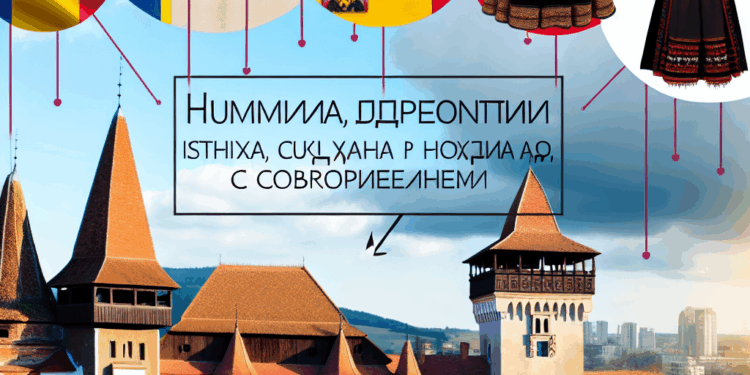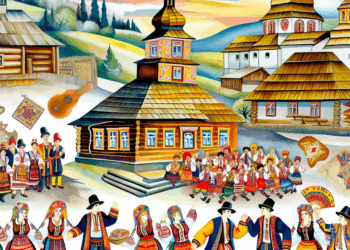Introduction
Chernivtsi, located on the border between Ukraine and Romania, is a city with a rich history and diverse cultural heritage. The question of the possibility of Chernivtsi’s return to Romania is of interest to historians, sociologists and political analysts. Although it is a difficult and complex topic, it is important to consider the various aspects that may influence such a return, including historical reasons, cultural ties, expert opinions, as well as legal and geopolitical arguments.
Historical reasons
Chernivtsi’s history is saturated with various events and influences, which makes it unique. The city was founded in the 14th century and became an important cultural and economic centre. In 1775, after the Austro-Turkish War, Chernivtsi became part of the Austrian Empire, which initiated its development as a cultural centre.
Chernivtsi University, founded in 1875, played a significant role in this process. This educational institution became one of the most famous in Europe, attracting students from all over the empire. The University’s complex of buildings, built in the Neo-Mauritanian style, has been recognised as a UNESCO World Heritage Site, underlining its cultural significance.
In 1918, following the collapse of Austria-Hungary, Bukovina, including Chernivtsi, was annexed to Romania. This period was marked by the flourishing of the Romanian language and culture. However, after World War II, Chernivtsi became part of Soviet Ukraine, leading to changes in cultural identity.
Thus, the history of Chernivtsi demonstrates complex and ambiguous transformations in the political and cultural spheres, which is one of the key factors discussed in the context of the possibility of returning to Romania.
Cultural ties
The cultural heritage of Chernivtsi and Bukovina has a strong Romanian footprint. Romanian language and culture were dominant in the region for much of the 20th century, leading to the formation of a Romanian identity among local residents. Many Romanian traditions, customs and festivals continue to be preserved in Chernivtsi, despite the influence of Ukrainian culture.
Special attention should be paid to the Chernivtsi University, which has not only become a symbol of education, but also a centre of Romanian culture. Romanian literary clubs, art and music ensembles affirming the Romanian heritage functioned at the university.
Contemporary research shows that the maintenance and development of Romanian cultural identity in Chernivtsi continues despite changes in the political situation. In interviews with local cultural figures and historians, it is evident that many residents are proud of their Romanian heritage and see the possibility of closer ties with Romania as a positive step.
Opinion of experts
Among experts in national politics and international relations, there is a wide range of opinions regarding the prospects of Chernivtsi’s return to Romania. For example, some historians emphasise that such a change could lead to economic benefits for the region, thanks to investments from Romania and the return of cultural heritage.
However, other experts warn about possible political consequences, such as the deterioration of relations between Ukraine and Romania. Given the complex geopolitical situation in Eastern Europe, such actions could lead to instability and conflict.
Some Romanian analysts point out the need for a deeper analysis and discussion of the issue. They emphasise that the return process requires not only the support of the local population, but also the official consent of both countries, which may prove extremely difficult.
Legal aspects
From a legal point of view, the issue of Chernivtsi’s return to Romania is complex. According to international law, changing the statehood of territories is possible only by mutual consent of the countries. In the case of Chernivtsi, this would require the consent of both Ukraine and Romania, as well as the approval of the international community.
Documents signed after the Second World War, such as the Yalta Conference, fixed territorial boundaries, and any changes in these boundaries will be perceived as a violation of international law. This circumstance complicates the prospects of Chernivtsi’s return to Romania.
An important aspect is that the population of Chernivtsi is currently predominantly Ukrainian. According to the 2001 census, about 60 per cent of the city’s residents belonged to Ukrainian culture, while the Romanian community accounts for approximately 25 per cent. Thus, even if return were on the agenda, the wishes of the local population should be taken into account.
Geopolitical arguments
From a geopolitical point of view, the issue of Chernivtsi’s return to Romania also has its own complexities. With growing tensions on NATO’s eastern flank and conflicts on Ukrainian territory, such a return could provoke negative reactions from several major players, including Russia.
Chernivtsi’s location on the border with Romania makes it a strategically important point. A possible return of this region to Romania could raise fears among neighbouring countries and lead to instability in the region.
On the other hand, the Romanian government may see it as a way to strengthen its position in Eastern Europe. However, such a strategy also requires attention to the cultural and socialisation processes taking place in Chernivtsi.
Conclusion
The prospects of Chernivtsi’s return to Romania are a complex and multi-layered topic involving historical, cultural, legal and geopolitical aspects. The historical memory of Chernivtsi’s Romanian heritage, including its cultural life and trade links, continues to influence the city’s contemporary population.
However, the transition to Romanian control requires serious analysis, constructive co-operation between the countries and a willingness to compromise. It is important to remember that any step in this direction must take into account the opinion of the local population and international norms.
At the moment, the return of Chernivtsi to Romania remains in the realm of hypothetical scenarios. Nevertheless, this topic continues to generate interest and debate, emphasising the importance of cultural heritage and historical memory in shaping modern society.








